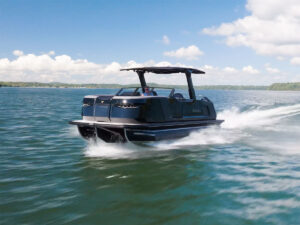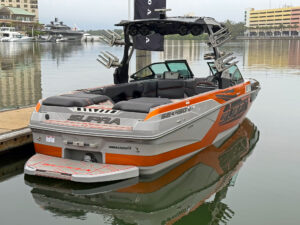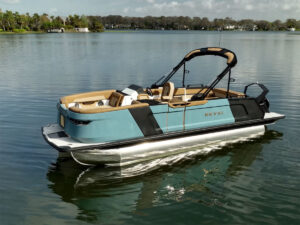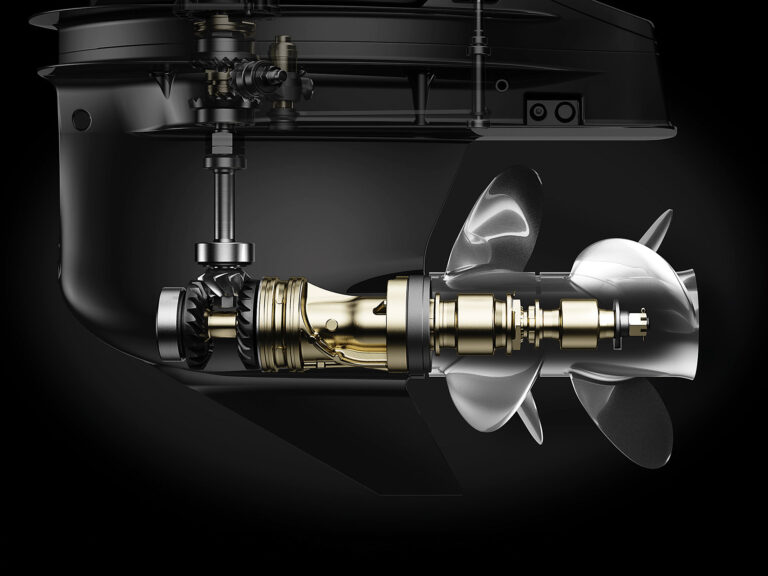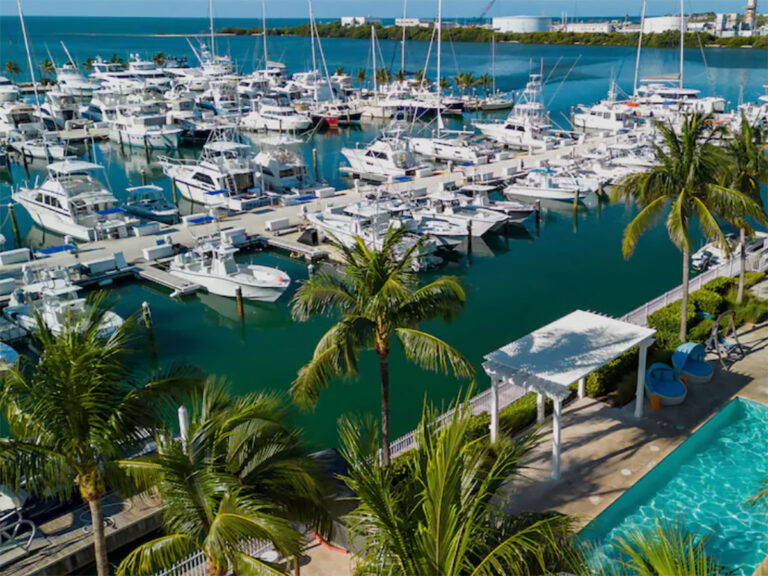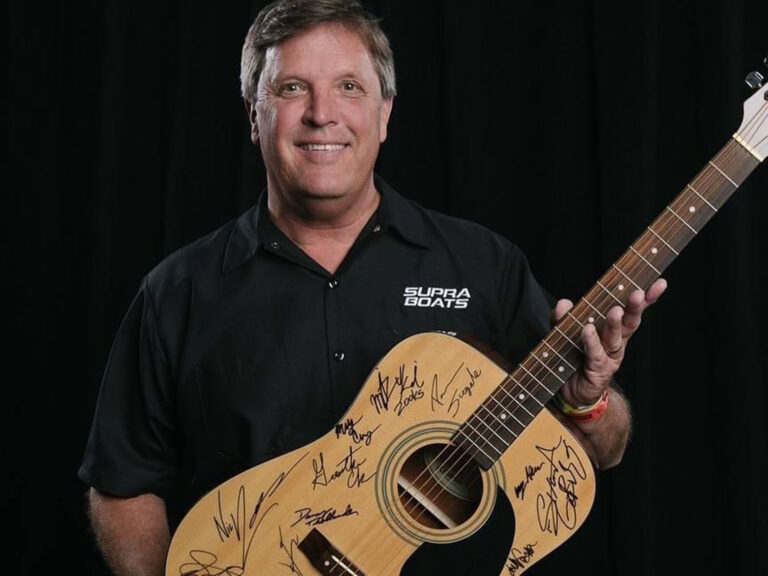
The very phrase “diesel outboard” seems like an oxymoron. Diesels, by and large, are clunky, smelly, low-powered and oily creatures that reside deep in the bilges of yachts. Figuring out how to hang one on the stern of a recreational boat boggles the imagination.
But think of it this way: as a quick-revving 350 hp powerhouse with far lower fuel consumption, nearly double the torque of comparable gas outboards, and eco-friendly too.
Let me introduce the new Cox Marine 350. A follow-up to the Cox 300 diesel outboard, this amped-up version from UK-based Cox Marine is making large inroads into the US market, where builders such as Jupiter, Freeman, and Intrepid are offering them to power center-consoles and more. The US Coast Guard already installs them on Boston Whaler 37s, and the Fort Lauderdale Marine Patrol powers a pair of RIBs with the 350s.

This purpose-built V-8 features twin turbos. The powerhead and direct-drive crankshaft is vertical, bathed in oil for longevity, which allows a narrower package for multiple-outboard rigs. It has a 1.25-inch-diameter prop shaft with 19 splines, so a wealth of standard props are available.
More important, this 350 has immense torque: A Yamaha 425 hp gas outboard puts out about 400 pound-feet, while the Cox 350 offers 776 pound-feet to quickly jump a big center-console full of anglers onto plane.
While doing that, it’s saving on fuel. The aforementioned 425 hp gas outboard burns about 37 gph at wide-open throttle, according to published tests, while the Cox uses 21 gph at max speed, according to our test aboard a Hammercat. That means less of a dent in your credit card for fuel, and you can range farther on the same size tank as well.
Speaking of fuel, the Cox diesel-powered 350 can also run on hydrotreated vegetable oil, a synthetically produced fuel that is processed using renewable waste lipids without using petroleum resources. It even runs on jet fuel, available everywhere in the world.
Cox made it easy to switch to this diesel. The 350 has three shaft lengths (25, 30 and 35 inches) for varying transoms, and the 30-inch bolt pattern is universal: Lift off your current gas outboard and bolt on a Cox—no rebuilding transoms. Because the Cox 350 is NMEA 2000-compatible, it networks with most models of MFDs, and each engine comes with its own full-color LCD engine display, touchscreen optional.
The 350 has wireless start, so you can drift-fish and then light the fires from anywhere on board. There’s also a man, oops, person-overboard detector that shuts down the engines if someone goes into the drink.
The standard Optimus electric steering is programmable: Set the lock-to-lock turns for maneuvering or long runs, as well as stiffer or lighter “feel.”
Read Next: Reasons to Repower Your Boat With an Outboard Engine

If you’re used to gas outboards, you’ll love the flat five-year/1,500-hour warranty and, even more, the 250-hour service interval, which is just for fluids and adjustments—no lengthy shop time. And Cox has created a global supply network for full parts and service support.
We ran the Cox 350 on a Hammercat 35, a new center-console catamaran from South Africa, which is challenging the North American cat world. With the 350s hung on the widely spaced transom, we were running with nearly full twin 200-gallon tanks and a handful of husky guys: all-up weight around 9,000 pounds.
Cut to the chase: In lumpy water, we topped out at 50 mph (44 knots), but the convincer is that we could cruise comfortably on plane at 23-ish mph (20-ish knots) while sipping just 13.3 gph. For the mathematically challenged, that’s a range of 600 nautical miles!
Hammer down a bit more, and 30 knots would get us to faraway fishing grounds at 29 gph. At that speed, the Cox 350s were really quiet too, registering just 63 dB(A) on my sound meter at the helm, where we’re talking normally.
The Cox is also good for the world, with about 36 percent less emissions than a similar gas outboard, according to Cox. It is certified EPA Tier 3, RCD II, and IMO II, making it the most environmentally friendly high-horsepower outboard available.
Quiet, powerful, buckets of torque, no smoke, user-friendly, and low on fuel consumption. The Cox 350 diesel outboard might be the best British import since The Beatles.
Specifications
| Horsepower at Prop: | 350 |
| Torque at Prop: | 776 lb.-ft. |
| Configuration: | 60-degree V-8 |
| Displacement: | 266 cu. in./4.4L |
| Dry Weight: | 866 lb. |
| Gear Ratio: | 1.46:1 |
| Warranty: | 5-year recreational |

